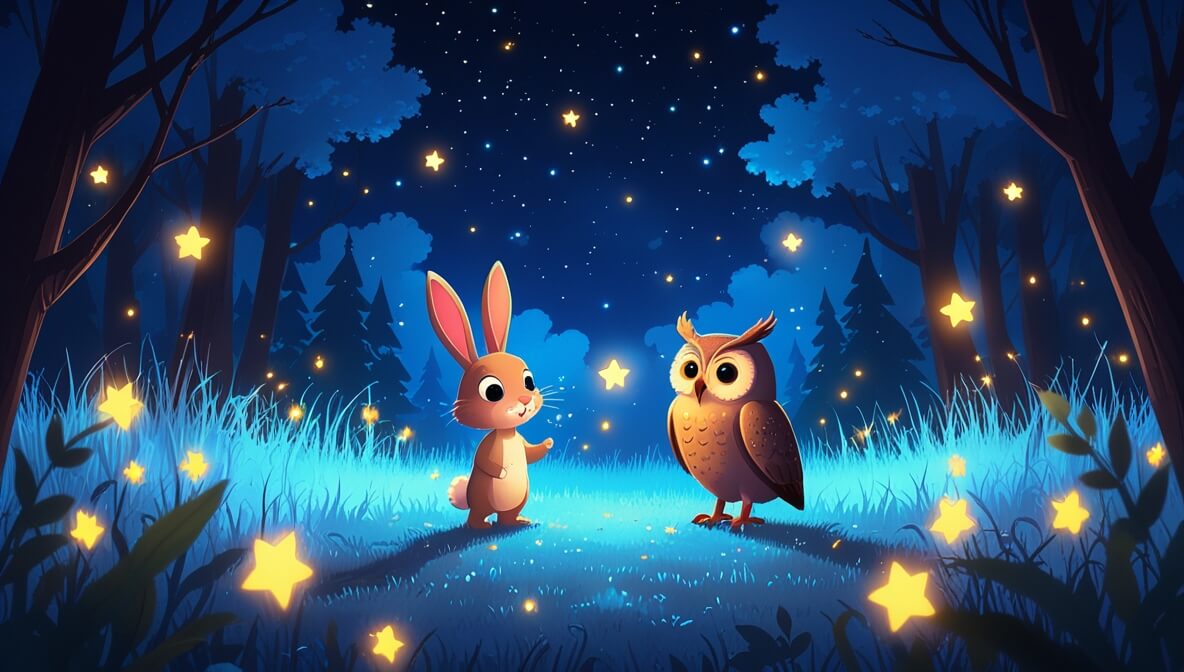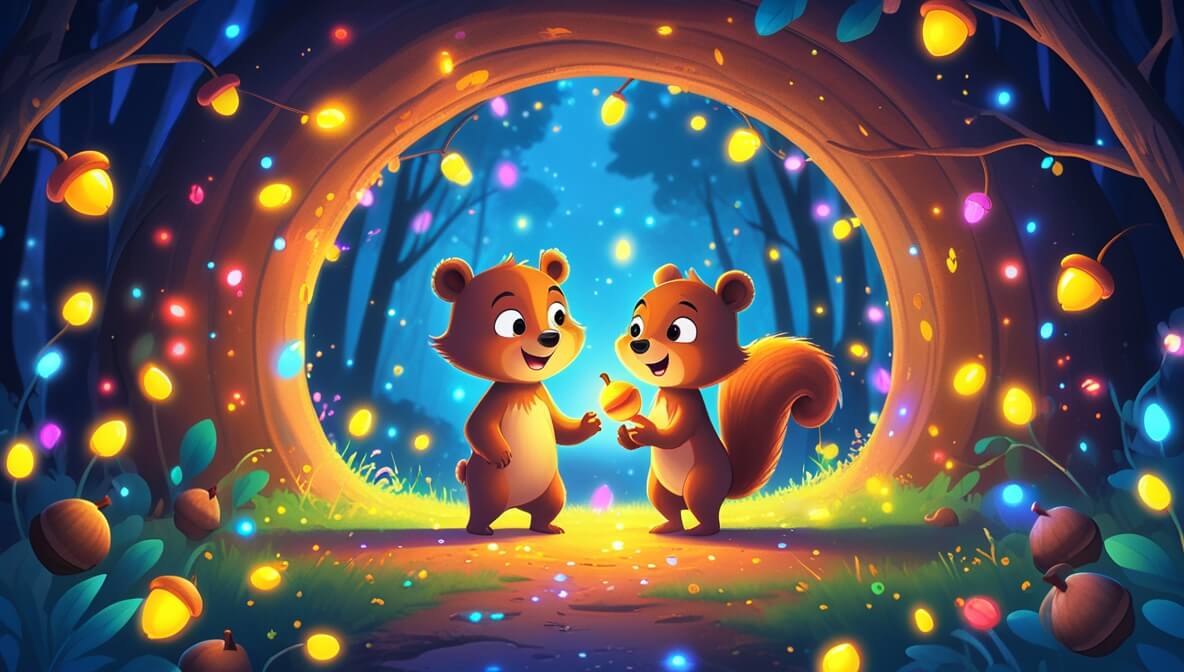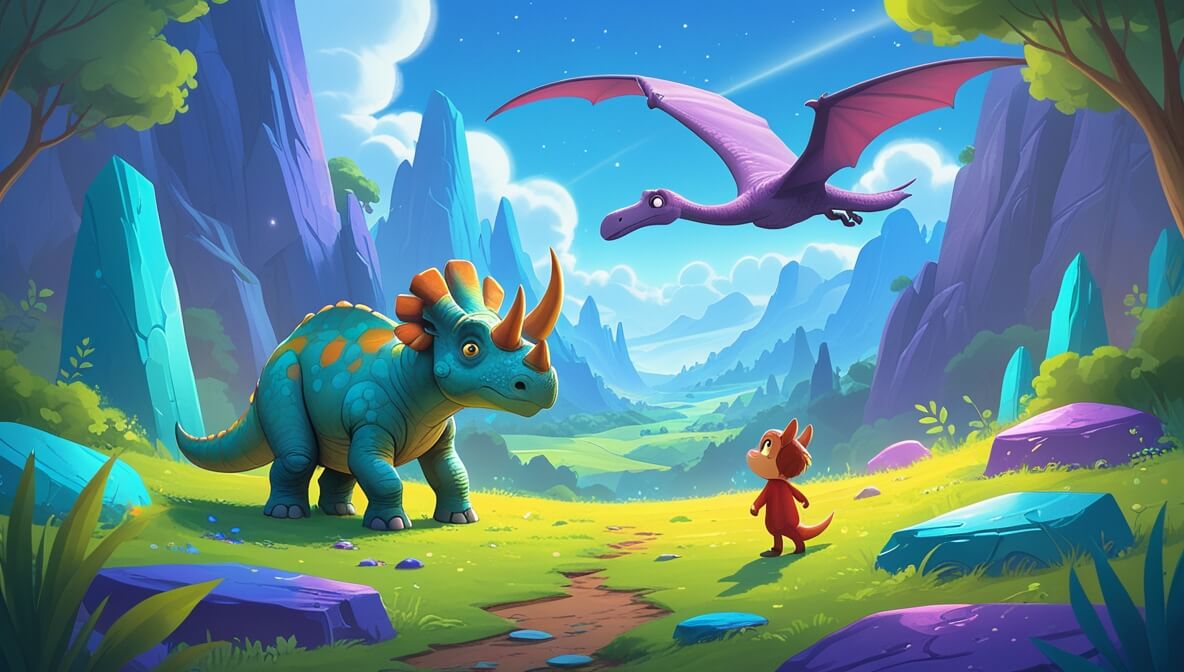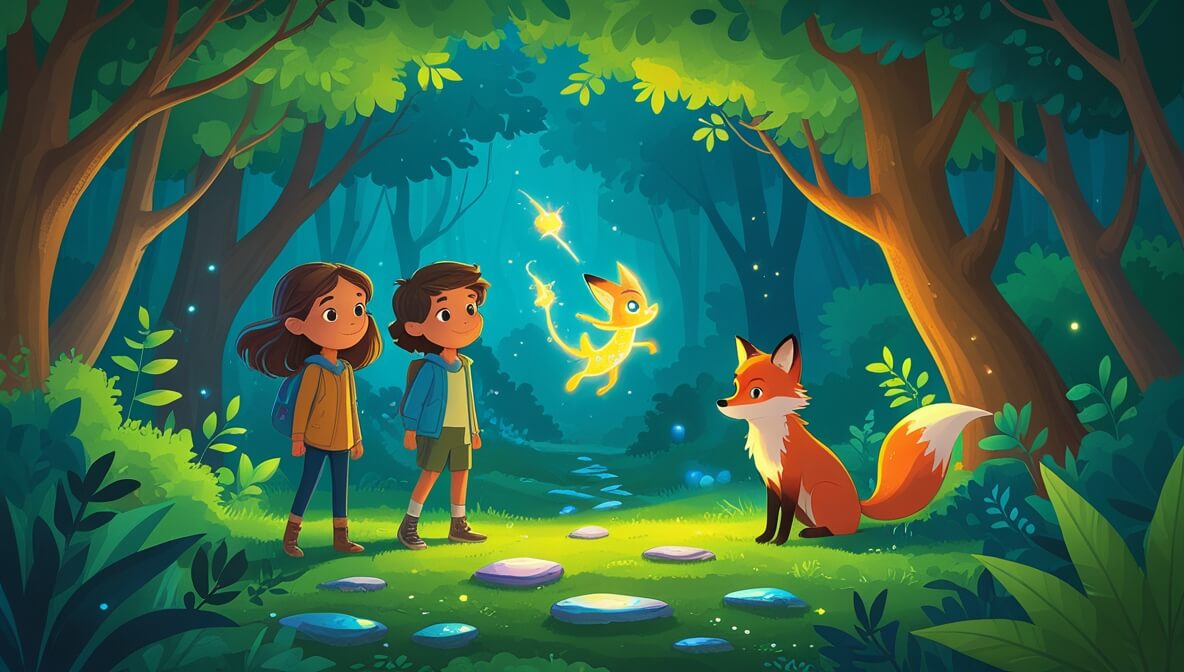Join the adventure of a brave little bunny and a wise old owl as they discover the magic of a moonlit forest.
Age Recommendation
0 – 4 years
Characters
Characters:
- Nibblet (a curious little bunny with big ears)
- Whisper (a wise old owl with sparkling eyes)
Story
Once upon a time, in a forest that shimmered under the moonlight, there lived a little bunny named Nibblet. One night, as the stars twinkled like diamonds, Nibblet decided to explore the forest. He hopped along the soft grass, his ears twitching with excitement. As he ventured deeper, he heard a gentle “hoo” from above.
The Owl’s Invitation
High up in an ancient oak tree, sat Whisper, the wise old owl. “Hoo, hoo! Who’s there?” called Whisper. “It’s me, Nibblet,” replied the bunny, looking up with wonder. Whisper fluffed his feathers and said, “Come, let’s explore the magic of this night together.” With a flutter, Whisper flew down to join Nibblet on his nighttime adventure.
The Moonlit Path
As they walked together, Whisper explained how the moon helps light the way for all creatures at night. Nibblet listened closely, his nose twitching with interest. “The moon is like a gentle friend,” Whisper said, “always watching over us.” Nibblet felt safe with Whisper by his side.
Discovering Magic
They soon discovered a small clearing where the grass glowed silver under the moon. Whisper pointed with his wing, “This is where the magic lives.” Nibblet’s eyes widened as he saw tiny glowing creatures dancing in the air. “Fireflies!” he gasped, bouncing with joy. Whisper chuckled, “Yes, they’re the stars of the forest floor.”
Homeward Bound
As the night grew deeper, Whisper said, “It’s time to go home, little friend.” Nibblet nodded, feeling sleepy but happy. They hopped and flew back towards Nibblet’s cozy burrow. Before parting, Whisper said, “Remember, the magic of the night is always here when you need it.”
The end.
Moral of the Story
The story teaches the value of curiosity and friendship. Exploring new things is fun, especially with a friend by your side.
Questions to Think About
- What do you think Nibblet learned from Whisper?
- How did the moonlight help them on their adventure?
- Why is it nice to have a friend like Whisper?
- What other magic might you find in the forest?
- How do you feel when you explore new places?
Do You Know
- Owls can see very well in the dark because of their special eyes.
- Fireflies glow because of a chemical reaction in their bodies.
Word Explorer
- Curious: Wanting to know more about something.
- Shimmer: To shine with a soft, flickering light.
- Burrow: A small hole or tunnel where an animal lives.
Emotions in the Story
- Excitement: When Nibblet decided to explore the forest.
- Wonder: When Nibblet saw the glowing fireflies.
- Comfort: When Whisper promised the magic of the night was always there.
Color Your Scene
Imagine Nibblet and Whisper in the glowing clearing with fireflies dancing around. Draw the silver grass, the twinkling stars, and the happy faces of Nibblet and Whisper. Use lots of yellow and silver for the magical scene!
Parents’ Corner
This story is a wonderful way to introduce your child to the beauty of nature and nighttime. Talk about the calming effect of the moon and stars, and how exploring with friends can be both fun and safe. Encourage your child to notice the wonders around them and to think of nighttime as a time of magic and peace rather than fear. Use the story to discuss the importance of making friends who help us see the beauty in the world.











